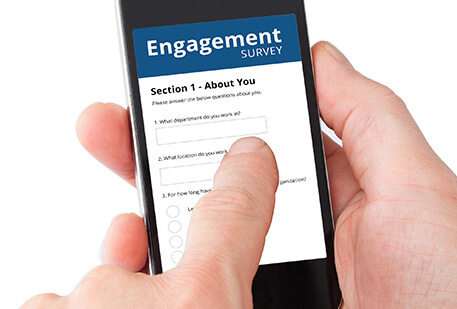Customer service: myth or reality
The mission for many of today's organizations is improved customer satisfaction and retention through better customer service.
There are many companies that have put real teeth and accountability into their employee training to insure they get the consistent results in customer service they say they desire. Unfortunately there are many more companies who have only given lip service to this customer driven philosophy or approach. Words do not often become deeds in the area of customer service.
There are a number of reasons or causes that contribute to a lack of accountability in the employee customer service area. Before we begin, however, it is essential that we get a working definition of Effective Customer Service.
Effective Customer Service is not a slogan, advertising program, a button that everyone wears or a banner touting a, "We Care” attitude. It is a consciousness or attitude that penetrates every nook and cranny of the organization. It is a philosophy that is understood and embraced by every employee. That's every employee, regardless of position, length of service or vocation. It is consistent regardless of the period in the week or month, market pressures, department or branch, current sales results, current cash flow, management philosophy of the day or market position. It is not a program that is funded for the short term, but a corporate lifestyle that is on-going regardless of the whims of management, the fickleness of customers or the dynamics of the marketplace.
What prevents an organization from building this consciousness into the fabric of its management team and employees?
- If the corporate culture has been traditionally profit and/or earnings driven, then it will be difficult to shift gears to a customer driven philosophy.
- If communication is heavily weighted in a top down direction, you can bet that it will take lots of time and follow-through to re-focus to a bottom up style.
- If the management style is closed, authoritative and/or hierarchical, upper management will, unless they are totally and completely committed to changing the attitudes of the organization as a whole, abandon this new and challenging change in philosophy sooner or later.
- If the attitude exists among middle management and employees is, "here we go again", few members of the organization will be able to fight the internal tide of apathy.
- If employees have too much on their plate, because your business style is to run "lean and mean', it will be difficult to consistently enforce the policies and procedures necessary to maintain the integrity of actions consistent with your stated objective.
An effective customer service philosophy requires constant vigilance and dedication to see it through regardless of how it may hurt to maintain the integrity of your customer commitments.
Here are a few examples:
Let’s say that you have a ‘no questions asked money back’ guarantee. A customer, who has purchased a high ticket item from you, for whatever reason, changes his or her mind and returns the product. You tell them that you will take the product back but you have a restocking fee. Hmm. So you penalize the customer for their return.
I purchase a product from you and write a check. The check clears and I decide to return the product. You tell me I will have to wait fourteen days for my refund because the refund has to come from corporate headquarters. Hmm. Customer driven or company convenience driven, you decide.
I purchase a piece of equipment from you for several thousand dollars. It has a 30 day warranty, so you recommend I purchase a service contract for several hundred dollars a year, to insure that when the equipment breaks I will be able to get it serviced without additional cost. Hmm. Customer driven or organization driven? You decide.
These examples do not reflect a customer focused philosophy. And yet your corporate mission statement says, “Our customers are number one”. I don't think so.
One way to determine the effectiveness of your customer service philosophy is to regularly solicit customer feedback in a variety of ways. Have you ever had this experience? You are at a restaurant and the food is less than average but you don't have time to send your meal back. When paying your check the cashier asks, “How was your meal”? You tell them you were dissatisfied and they say they are sorry. I am sorry too. I will never return to that establishment again and you can bet I will tell a number of my friends, clients and peers.
Effective customer service requires consistent behaviour from every employee that customers encounter in every situation when they do business with your firm. There are no excuses for: "I didn't know that was on sale, I am new, this is my last week; we close in ten minutes could you please hurry, I don't know when your order will ship, it’s been on back order for several weeks”, etc.
The following Twelve Laws of effective customer service must be integrated into any customer service attitude, philosophy or program to insure integrity between policy and procedure and customer perceptions.
Law #1. The customer is not always right. However, the goal is not to discredit, embarrass, belittle or challenge them in a destructive way. What needs to be done is discover what is the source or cause of their incorrect perceptions, beliefs or attitudes. The next step is to determine if the organization has contributed significantly to these incorrect feelings or if their source is the competition, the marketplace or Uncle Harry.
Law #2. The customer is never always completely wrong. There is always some element of their perception that is a true reflection of reality as they see it. The customer can be a teacher for us if we keep an open mind and a receptive neutral demeanor. They can mirror back to us where our advertising, distribution methods, pricing strategies, administrative policies or marketing or sales methods need improvement, refinement or a major overhaul.
Law #3. The customer deserves your best regardless of the time of day or day of the week or the month of the year. Working late last night because it was your monthly inventory or your annual sales blowout should not become your customer’s problem. The fact that you just returned from a week on the road working trade shows, although I have empathy for you, is not my problem.
Law #4. The customer deserves your best regardless of your training, length of service, inventory philosophy or any other prevailing corporate attitude. So you are sixty days away from retirement, and just filling time, waiting to get behind the wheel of your RV. Or, you are on the first week of the job and still can't master this new piece of equipment, or you are overstocked on a particular item so you cut back on stocking the items that I use regularly and ask me if I will accept a substitute. These and thousands of illustrations like them, if they become your customer’s problem, will cause them to seek out your competitor.
Law #5. Don't pass the buck. Whoever hears a problem owns the problem. How often have you been transferred several times before you finally get to the right person? Have you ever heard, "It’s not my job, problem or function". Don't get defensive or upset when a customer brings you a concern or complaint. Accept the fact that the problem exists, and help get it solved.
Law #6. Don't be too busy for your customers and don't make it difficult for them to do business with you. How many times have you gotten the feeling that you are an interruption in an employee’s day or workload? Have you ever been made to feel like you shouldn't be having a problem with a product or service, that it is your fault that the item broke?
Law #7. Employees are customers too. Every employee that ever does anything within an organization ultimately is doing it indirectly for the customer. That makes every employee an ambassador, spokesperson or representative of the customer. When an employee fails to serve another employee in an effective or timely manner, sooner or later the customer will feel the repercussions.
Law #8. If you must use technology, make it user friendly.
Law #9. Say what you will do and do what you say. Follow through, keep your promises, honor your commitments, and keep customers informed of your progress. Customers will tend to be more understanding, patient and tolerant if you communicate with them with integrity and in a timely manner.
Law #10. Be interested, care and act like you are glad your customers are doing business with you. People like doing business with people who appreciate their business. People are willing to give more of their business and money to businesses that are friendly, accommodating and interested. Some of the ways to show you care is by having up to date product knowledge; knowing who does what in your organization so you don't have to keep a customer on hold for ten minutes trying to find someone to solve their problem; smiling, even if it hurts.
Law #11. Keep private things private. Customers are not interested in your personal problems or corporate politics. They do not have the time nor are they interested in hearing about who did what to whom and why in your organization. Sharing private, confidential or personal information, whether you are the CEO or receptionist, is in poor taste and unprofessional.
Law #12. Think ahead of the customer with a problem solving attitude. To survive and prosper requires that organizations and all their employees think well ahead of their customers and their potential future desires, problems and needs. Waiting for the customer to bring their problems to you or to communicate their future desires or needs with you will be too late.
Reprinted with the permission of Tim Connor, the bestselling author of over 80 books including Soft Sell, the #1 best selling sales book in the world for over 20 years. Soft Sell is now in 21 languages with sales over one million copies. Tim has been a globally renowned sales and management speaker and trainer for 37 years. [email protected] 704-895-1239 (US); www.TimConnor.com www.CorporateDisconnect.com
 CA-EN
CA-EN UK
UK AU
AU US
US NZ
NZ PH
PH ZA
ZA SG
SG HK
HK


